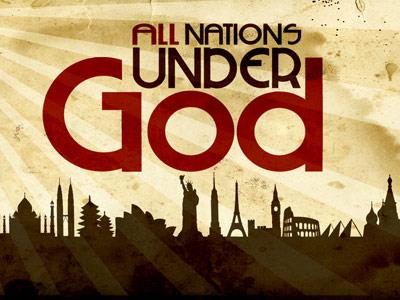-
The Seven Churches Of Asia Series
Contributed by Boomer Phillips on Aug 8, 2023 (message contributor)
Summary: Study #1: This introduction contains and quick overview of The Seven Churches of Asia, showing how they represent periods of time in the church age, culminating with the present day; thus showing that we are nearing the end.
NOTE: This Bible study on the end times comes from the perspective of a pre-tribulation Rapture.
Introduction
Throughout history people have found Revelation to be a confusing book, and some have even said that it is completely useless. So, why in the world should we study Revelation?
Turn with me in your Bibles, and let’s read Revelation 1:3:
3 Blessed is he who reads and those who hear the words of this prophecy, and keep those things which are written in it; for the time is near.
• Why should we study Revelation?
We will be blessed if we read and hear the words in the book of Revelation, and keep what we have learned. Also, the time is near for Christ’s return and we need to be alert and watching.
Martin Luther, the founder of the Protestant Reformation, would have disallowed Revelation a place in the New Testament canon. He said, “Whoever wrote Revelation had a great deal of audacity that he would first of all promise us a blessing if we read it, and threaten us with a curse if we take away from it.” John Calvin wrote commentaries on every book of the Bible except Revelation, and throughout the Church Age religious leaders have urged people to stay away from the book.
I believe that many people fear Revelation so much, and urge us to stay away from it, because Satan doesn’t want us to know the contents of the book. He doesn’t want us to be blessed, and he especially doesn’t want us to be on guard for the day of Christ’s return. We read at the end of verse 3, “for the time is near.” The word “near” in the Greek means, “imminent times” and “will soon come to pass.” The time of our Lord’s return is near, and Satan would love nothing better than for Christians to be caught off guard when the Lord Jesus Christ comes in all His glory.
We will undergo this study of Revelation and the Endtimes in anticipation of a spiritual blessing, and in order to recognize and understand the nearing of Christ’s return and the sign of the times (Matthew 24:3). In Matthew 24:36, Jesus said of His Second Coming, “Of that day and hour no one knows, not even the angels of heaven, but My Father only.” However, in Matthew 24:32-33, in the “Parable of the Fig Tree,” Jesus told us that we can at least know when we are in the season of His return. Jesus urged us in Matthew 24:44, “Therefore . . . be ready, for the Son of Man is coming at an hour you do not expect.” It is my hope that this study will enable us to be prepared for that day.
So, I want to briefly tell you how we are going to accomplish this study. This will not be a verse-by-verse exposition. It will instead be an “overview” of the Endtime prophecies of Revelation. We will also look at a few prophecies found in the Old Testament. What we will do is examine the major themes and symbols found in Revelation, discuss them in some detail, and then try to put together a picture or timeline of what the Endtimes time will look like. So, with this in mind let us get started!
The Seven Churches of Asia
In chapters 2 and 3, Revelation starts off rolling with the Seven Churches of Asia. I do not want to burst your bubble, but we are not going to spend a whole lot of time here, as I want to get into the action that happens with the Rapture!
I think it is important to point out a major theory with the Seven Churches. I should first note that the Seven Churches were actual churches that existed during the time of the apostles, and we can look at their behavior and find some application for churches today, which makes for an interesting sermon series. But the theory is that each church represents a time period in church history; and so, I am going to give you the dates that each church supposedly represents, and then share a brief explanation.
In Revelation 2:1-7, we find the church of Ephesus. The time period is from “Pentecost to approximately 100 A.D.” Ephesus means “Desirable One” or “Beloved, and this Church represents the period of the Apostolic Church, the time of the death of the last apostle and the author of the Book of Revelation – John.
In Revelation 2:8-11, we find the church of Smyrna. The time period is from “100 A.D. to about 313 A.D.” Smyrna means “myrrh” or “bitterness.” Myrrh is a bitter herb which, when crushed, yields a sweet aroma or pleasant-smelling perfume. This Church becomes the fitting symbol to represent the second period of Church history, that of the Roman persecution of Christians.

 Sermon Central
Sermon Central



